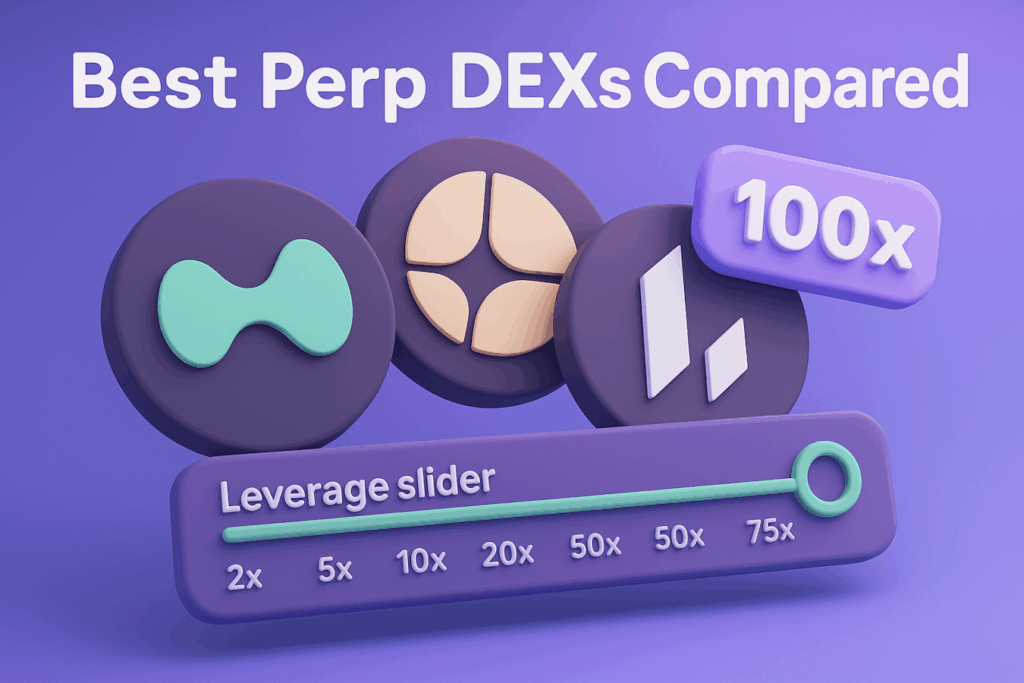share
When Satoshi Nakamoto released his blockchain whitepaper in 2009, he was not aware of the digital currency revolution that his endeavors would kick-start during the next decade. Litecoin followed Bitcoin, and then came Ripple and Ethereum, which were followed by hundreds of other digital currencies that currently have a market capitalization of over $200 billion. Therefore, when we talk about the potential of Bitcoin alone, we have to look at multiple factors since it is not the only digital currency anymore.
Cryptocurrencies have not experienced smooth sailing as a number of nation-states have attempted to halt the progress through the introduction of new laws, regulations, and compliance terms. A few countries have banned any type of crypto trading outright. Considering all these factors raises the question of whether the future of Bitcoin and other cryptocurrencies holds any promise.
Does Cryptocurrency Have A Future?
Cryptocurrency gets the most attention of any blockchain technology, particularly given recent market volatility. These technologies have been the foundation for many other use cases for more than a decade. Some economic analysts predict a big change in crypto is forthcoming as institutional money enters the market. Moreover, there is the possibility that crypto will be floated on the Nasdaq, which would further add credibility to blockchain and its uses as an alternative to conventional currencies. Some predict that all that crypto needs is a verified exchange traded fund (ETF). An ETF would definitely make it easier for people to invest in Bitcoin, but there still needs to be the demand to want to invest in crypto, which might not automatically be generated with a fund.
Versatility in Application
The high versatility of cryptocurrencies is a decisive factor in the rise of crypto popularity because more and more people and companies are recognizing the practical advantages of digital currencies and blockchain assets over fiat money. First, cryptocurrencies are decentralized, meaning they are not subject to the control of governments or financial institutions. This allows for more freedom and flexibility in how they can be used. Second, cryptocurrencies are immutable, meaning they cannot be changed or reversed once they have been created. This makes them more secure than fiat currencies, which can be subject to inflation or manipulation by central banks.
Third, cryptocurrencies are often much cheaper and faster to send than traditional fiat currencies. This makes them a more viable option for online transactions and international payments. Overall, cryptocurrencies represent a major advancement in the world of finance and provide many benefits over traditional fiat currencies.
Smart Contracts & Decentralized Apps (dApps)
In simple words, a DApp (decentralized application) is an application built on the top of a blockchain network that connects a smart contract and a frontend user interface. Smart contract is a simple program stored on a blockchain network. Smart contracts are often used for money applications to put funds to work without interacting with a bank and other intermediaries. Thus, dApps undoubtedly hold the future. With all the hype and popularity that blockchain and decentralized applications are possessing, organizations are aligning more towards DApp development. 2021 was the best year ever for dApps – the number of wallets available and trading volumes hit the peak.
Adoption by Big Industry Players & State Institutions
As mentioned before, at the time bitcoin was introduced, many financial and economic pundits were not too keen in terms of realizing the true potential of bitcoin and its underlying technology. They were of the view that just like many other digital trends like the dot-com bubble and Myspace, bitcoin will also turn out to be only a hyped-up illusion with little to no practical benefits. They were also apprehensive about the consequences of true decentralization and transparency in an established industry. Some of the concerns related to criminal activity funding and money laundering were genuine but most of the objections were simply fear, uncertainty, and doubts (FUD).
In the last ten years, one of the most impactful changes we have seen is how the attitude of the same stakeholders has completely changed. In part, this is due to the technological revolution that we are experiencing all over the globe and some part of the credit goes to bitcoin and cryptocurrencies themselves as they have evolved to become a more practical and versatile solution to real-life problems. This is why financial and tech industry giants like JP Morgan, Swissquote, IBM, and Microsoft have invested in the blockchain movement along with some nation-state banks as well including Sweden, China, and Saudi Arabia. This has given more legitimacy and credibility for the future bitcoin growth.

Which Cryptocurrency Will Be the Best Future Investment?
Cryptocurrency is a string of encrypted data used to represent a unit of money. A mentoring system called a blockchain, which also functions like a reliable and protected ledger of transactions, such as buying, selling, and transferring, is in charge of organizing and managing it.
Amid the Crypto market’s ups and downs, deciding which Cryptocurrencies to invest in is always a critical question to answer. In this regard, we’ve compiled a list of the top 5 Cryptocurrencies with the highest returns.
1. Bitcoin
Starting from May of this year, bitcoin blockchain will reduce the mining reward by 50% with miners getting 6.25 BTC for their computational investment instead of 12.5 BTC. Having said that, the saturation of bitcoin will also contribute towards establishing the currency as the clearly dominant player with 70-75% of the market share. With such a huge capitalization rate in terms of sheer value, this will drive the price growth not only in 2020 but beyond as well. Bitcoin is also introducing Lightning Network which will make its blockchain a more efficient and robust tool for micropayments, decentralized apps, and e-commerce stores.
2. Ethereum
Launched in 2015, Ethereum is actually the name of the technology which the currency Ether runs on. Ethereum creates a global digital cash system that allows developers to experiment with their code and create Decentralized Applications (DApps), or applications that are open-source, decentralized (not controlled by a single entity or authority, but rather by its community), and are cryptographically secure. Like Bitcoin it is known for its security and protection against fraud and theft.
3. Ripple
Ripple, XRP is a cryptocurrency developed by the company Ripple to facilitate cheap, efficient transfer of money internationally. It has existed since 2012 as one of the oldest altcoins. XRP is unlike other cryptocurrencies such as Bitcoin. Bitcoin was created to be a peer-to-peer currency that would remove the need for banks, financial institutions or transaction intermediaries. On the other hand, XRP is a cryptocurrency designed to be utilized by banks and financial companies.Given that Ripple is built on and functions through the blockchain, it is considered the first money transfer network targeted towards the financial services industry which operates in this decentralized manner. The similarity between Bitcoin and XRP is the desire for faster payments and the lack of intermediaries or third parties needed for a transaction. XRP allows financial companies to send money across borders quickly, peer-to-peer.
4. EOS
EOS has been successful in addressing the scalability issues that Ethereum blockchain has been dealing with for years. This makes the particular blockchain a viable alternative to Ethereum, especially if it fails to deliver with the ETH 2.0 update. In the event of tech giants like Uber, Twitter, and Amazon making a decision to move to a blockchain, EOS is going to be on top of their priority list since it uses a consensus algorithm based on delegated proof of ownership (DPoS). It is not only technologically more advanced but provides the scalability and efficiency the workload of technology giants will need.
5. NEO
NEO is often a part of every potential crypto investment list. It is the first open-source blockchain to come out of China and one of the primary objectives of the coin is to revolutionize the conventional financial system by combining both real and digital assets. It offers a distinct trading method called Superconductor, which enables users to send and receive their funds through a decentralized channel. It offers a genuine application, which has kept the cryptocurrency relevant in the last few years. Keep an eye out for NEO as it may be holding an ICO soon.
What Will Bitcoin Be Worth In 2030?
CRR researchers evaluated and assessed all the potential addressable markets as well as variables to conclude that bitcoin price will rise to $19,000 by the end of 2020. Moreover, the price of the first cryptocurrency is expected to hit the $340,000 mark by 2025. Then the growth will slow down to an average of $10,000 per annum, as the bitcoin price will close in on the $400,000 ceiling by the end of 2030.
According to CRR researchers, the TAM consists of a variety of factors including the unit of account, consumer loans, medium of exchange, funds reserved, offshore accounts, micropayments, online transactions, value storage, remittances, crypto trading, STO funding, ICO funding, and more. According to the CRR research team:
“We believe that bitcoin is still at the very start of its adoption curve.
The price of $7,200 at the end of 2019 suggests that bitcoin has penetrated less than 0.44% of its total addressable markets.
If this penetration manages to reach 10%, its non-discounted utility price should reach nearly $400,000.”
Final Word
Whether you are just a cryptocurrency newbie or a seasoned professional, it is evident from the available evidence that bitcoin along with some other alt coins are only just starting to push forward. Their true potential is still untapped and once the reducing technological limitations are out of the way, we are going to witness hockey stick growth charts for bitcoin and probably many other cryptocurrencies. Many enthusiasts see the price today and think this is too high to buy in but the fact is, even with some downward fluctuations, bitcoin is going to bounce back and we do not know when it is going to aim for the stratosphere.
As a savvy bitcoin aficionado, you need to be careful to not miss out on the investment opportunity of a lifetime when it is still up for grabs. The best time to invest in bitcoin was 10 years ago; the second-best time is now!








